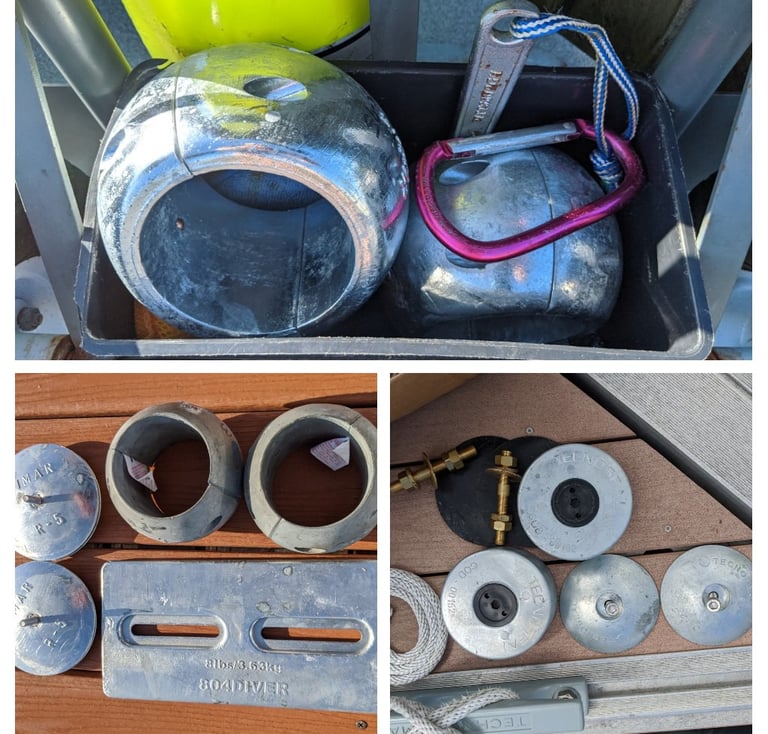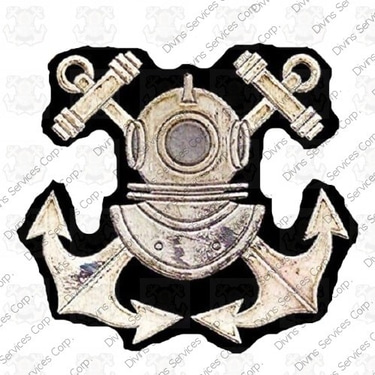Understanding Anode and Zinc Replacement: Types, Sizes, and Applications
Team of Diving Serrvices Corp
4 min read


Types of Anodes: Zinc vs. Other Materials
Anodes are critical components in corrosion protection systems, utilized extensively in various environments to mitigate the detrimental effects of corrosion. Among the types of anodes available, zinc anodes are widely recognized for their effectiveness, particularly in marine and freshwater applications. They provide sacrificial protection to metal structures by corroding preferentially, thereby safeguarding the underlying metal from deterioration. The use of zinc as an anode material is primarily due to its favorable electrochemical properties, including its relatively high potential and low cost.
In addition to zinc, aluminum and magnesium are also employed as anodes, each possessing unique characteristics that dictate their applicability. Aluminum anodes, for instance, are lightweight and provide a higher current output than zinc, making them suitable for use in harsher marine environments. They are particularly effective in saline water and are often used in applications such as ship hulls and offshore platforms. However, aluminum anodes can be less effective in freshwater environments compared to their zinc counterparts, where chloride ions are minimal.
Magnesium anodes, on the other hand, are frequently used in freshwater applications due to their high driving voltage. They react more aggressively than either zinc or aluminum, which enables them to provide robust protection for submerged structures in low-conductivity environments. Yet, this aggressive reactivity also presents challenges, as magnesium anodes may deplete quickly in high-salinity environments, reducing their overall lifespan.
When selecting an anode material, several factors must be considered, including the environment of use, the electrical characteristics required, and economic factors such as material cost and longevity. Each type of anode material presents a trade-off between effective corrosion protection, lifespan, and price, thus necessitating a thorough understanding of these properties to make informed decisions for specific applications.
Sizing Anodes for Optimal Performance
Selecting the appropriate size for anodes is critical to ensuring effective corrosion protection across various applications. Anodes are designed to protect metal surfaces from corrosion through a process known as cathodic protection. The size of the anode directly impacts its output of current, effectiveness in preventing corrosion, and overall longevity. Therefore, proper sizing is essential for maximizing performance and extending the life of the structures being protected.
The key to determining the correct size of anodes lies in understanding the specific requirements of the application at hand. Factors such as environmental conditions, metal surface area, and the anticipated current demand play crucial roles. Typically, larger anodes possess higher current outputs and longer service lives, making them suitable for extensive metal areas. However, they may also be more costly and require more significant installation efforts. Conversely, smaller anodes are easier to manage and can be more economical, although they may need to be replaced more frequently, depending on their output and the corrosiveness of the environment.
To calculate the required size of an anode, several factors must be evaluated. One commonly used formula in the industry is based on the area of the metal surface being protected, which can be expressed as:
Size (in amp-hours) = Surface Area (in square feet) × Current Density (in amperes per square foot) × Expected Life (in hours).
This formula allows for the proper determination of an anode's size based on the surface area exposed to corrosive elements. Furthermore, it is essential to consider local environmental conditions such as salinity and temperature, which can significantly impact corrosion rates and, consequently, the performance of the anodes. By taking these aspects into account, one can optimize anode sizing to ensure effective and lasting corrosion protection.
Best Practices for Application and Replacement
When it comes to the installation and replacement of zinc anodes, adherence to best practices is vital for maximizing their effectiveness and longevity. First and foremost, the ideal locations for installing zinc anodes should be identified based on the specific application, whether it is for boat hulls, oil rigs, or other structures exposed to corrosive environments. Placement in areas with direct exposure to water and where galvanic corrosion is likely to occur will ensure optimal performance. For marine applications, anodes should be located in the most electrically active areas of the hull to provide the best protection.
Regular assessment and timely replacement of zinc anodes are imperative. As a general guideline, anodes should be inspected every six months and replaced when they have been diminished to approximately 50% of their original size. Environmental conditions, water salinity, and the level of electrical activity can affect the rate of deterioration; therefore, a more frequent inspection may be necessary in harsher environments. Signs indicating the need for replacement include visible wear, large areas of corrosion where the anode has been used, or insufficient galvanic protection resulting in damage to the substrate being protected.
Following safety protocols during the installation and replacement of zinc anodes is also essential. Workers should wear suitable personal protective equipment, including gloves and eyewear, to guard against potential chemical exposure. Moreover, proper tools should be utilized to ensure a secure and stable installation. Maintenance tips include keeping anodes clean from debris and marine growth to ensure effective performance. Troubleshooting common issues may include investigating ineffective protection, which could stem from improper installation, electrical issues, or the use of unsuitable anode materials. Being vigilant about these factors will help ensure that zinc anodes serve their purpose effectively and contribute to the overall longevity of the materials they protect.
Introduction to Anodes and Zinc Replacement
Anodes are critical components in the field of corrosion prevention, primarily functioning within cathodic protection systems. Specifically, zinc anodes are widely utilized for their effectiveness in mitigating rust and corrosion in submerged or buried metal structures. These anodes work by serving as sacrificial electrodes, which corrode in place of the primary metal they are designed to protect. This process is based on the principle that zinc has a more negative electrochemical potential compared to steel, causing it to corrode preferentially when both materials are electrically connected in a conductive environment.
The importance of regularly replacing zinc anodes cannot be overstated, as their depletion directly impacts the integrity of the structures they protect. In applications such as marine vessels, pipelines, and water tanks, the longevity and functionality of the metal components depend heavily on the continuous operation of these anodes. When the zinc anodes corrode completely, the protective layer is compromised, exposing the metal to aggressive environmental factors that may lead to significant deterioration.
Furthermore, the maintenance of anodes is an integral aspect of preventive strategies employed in various industries. By understanding the electrochemical processes involved, stakeholders can effectively schedule replacements to avoid unexpected failures. This knowledge extends to recognizing signs of wear and understanding optimal sizes and types of zinc anodes suited for specific applications. In essence, the practice of replacing zinc anodes regularly is both a preventative measure and a smart investment into the longevity of valuable metal assets, making it a crucial topic for those involved in the maintenance and management of such structures.
Copyright ©2025. Diving Services Corp, All rights reserved.
